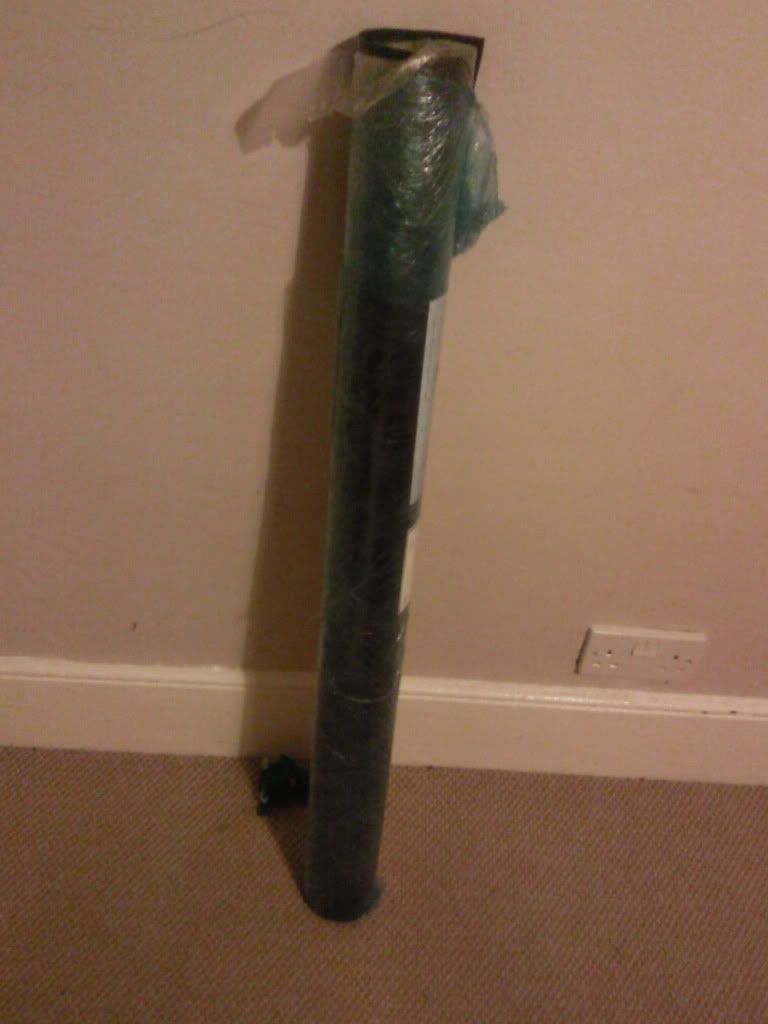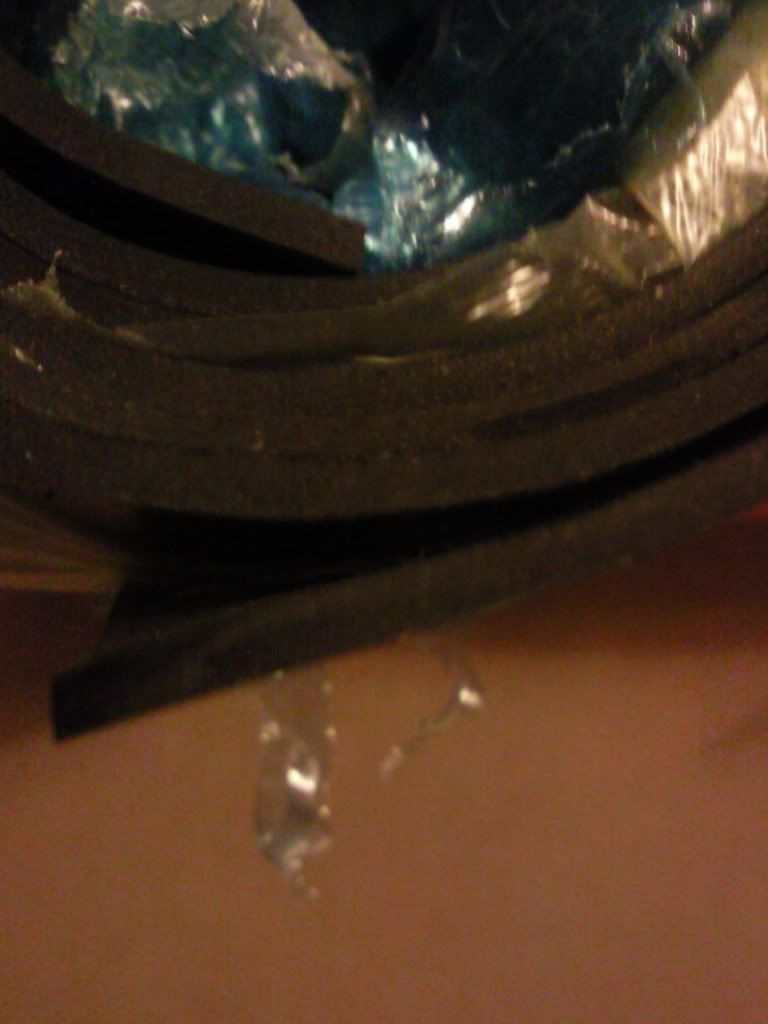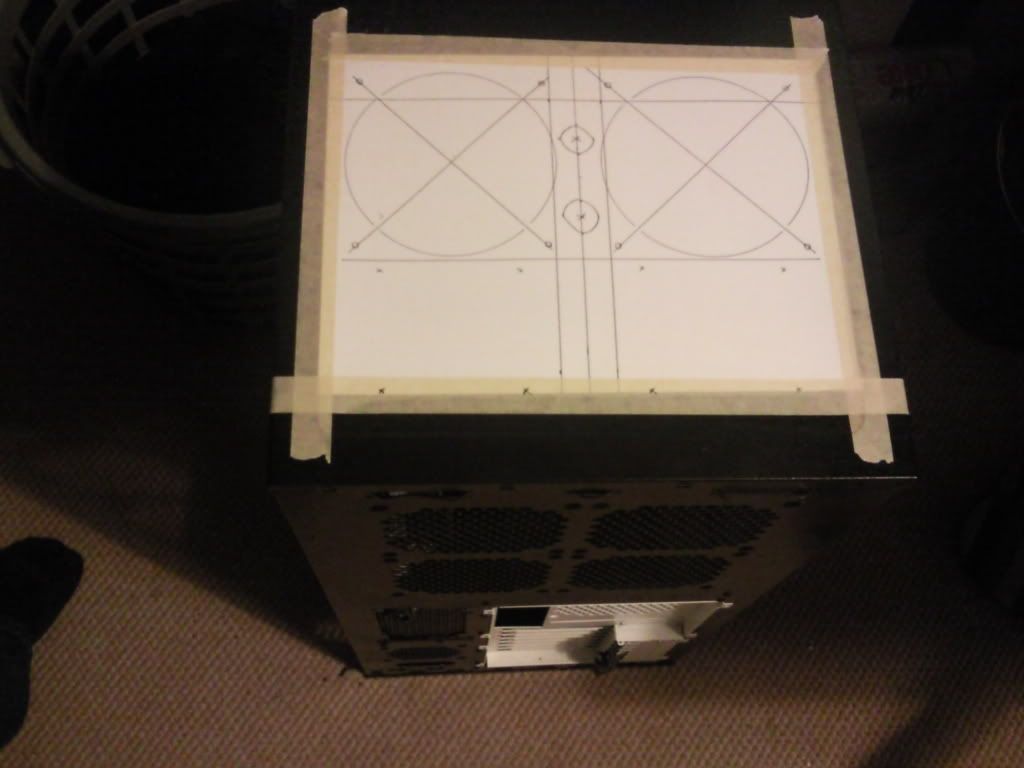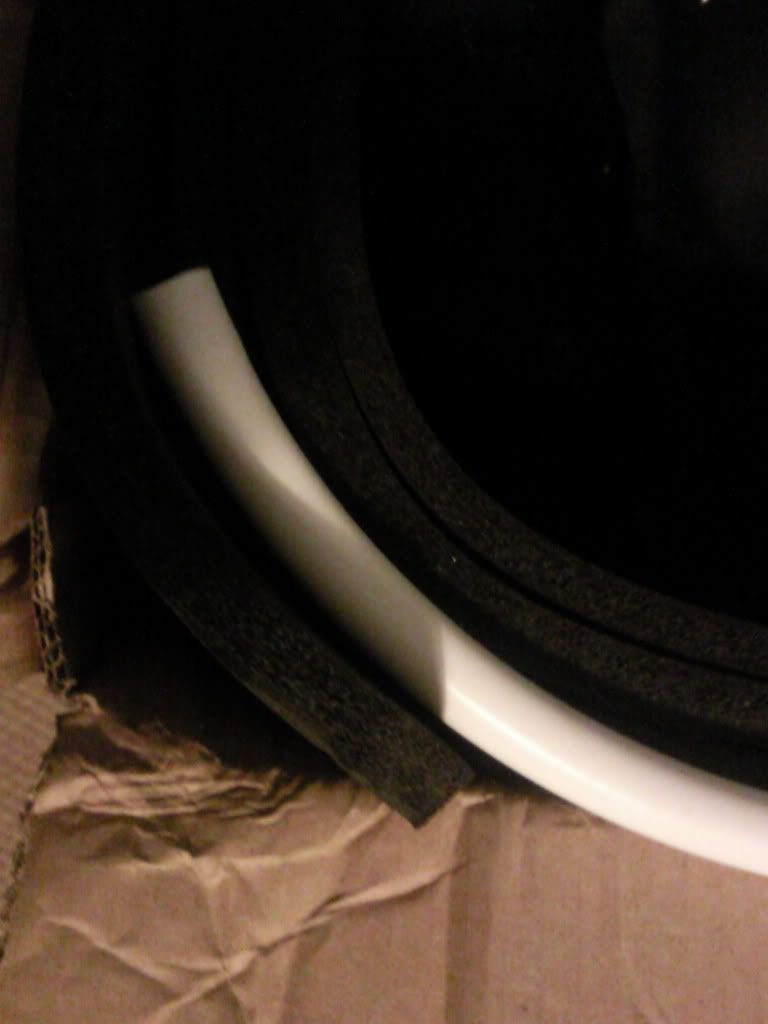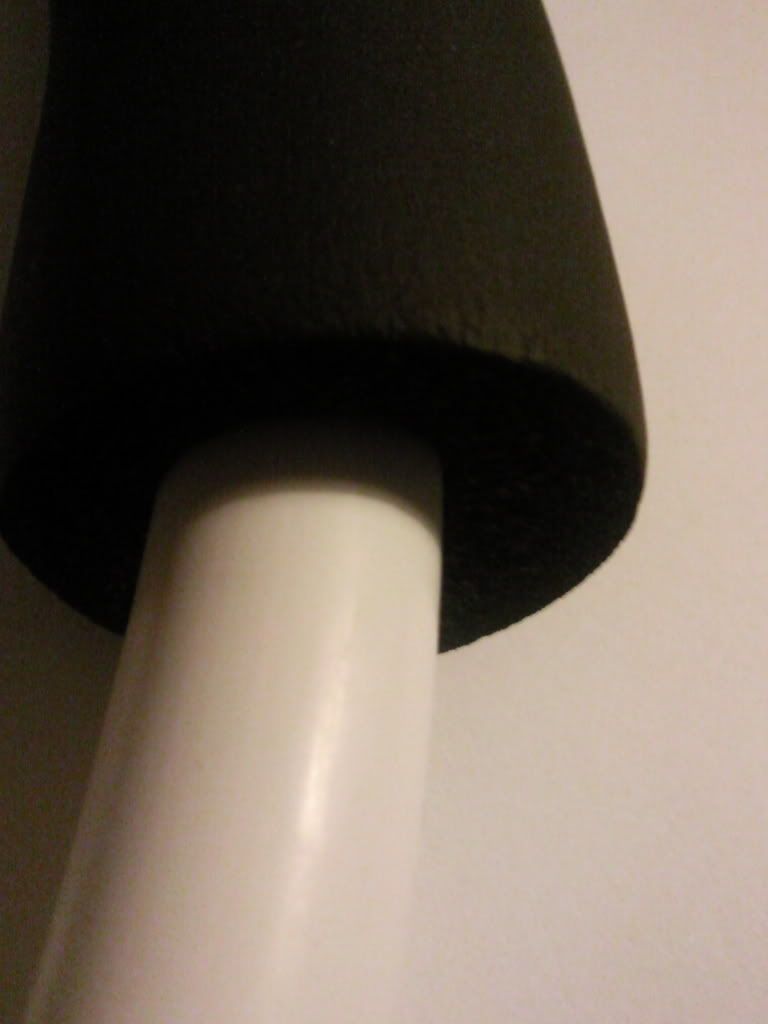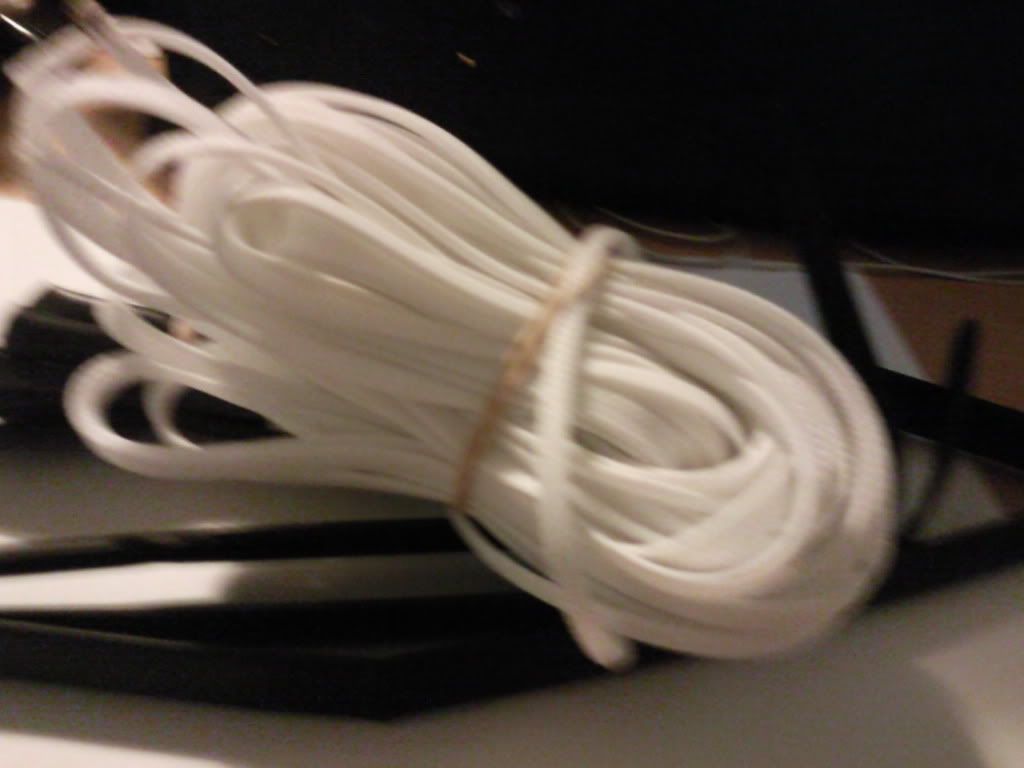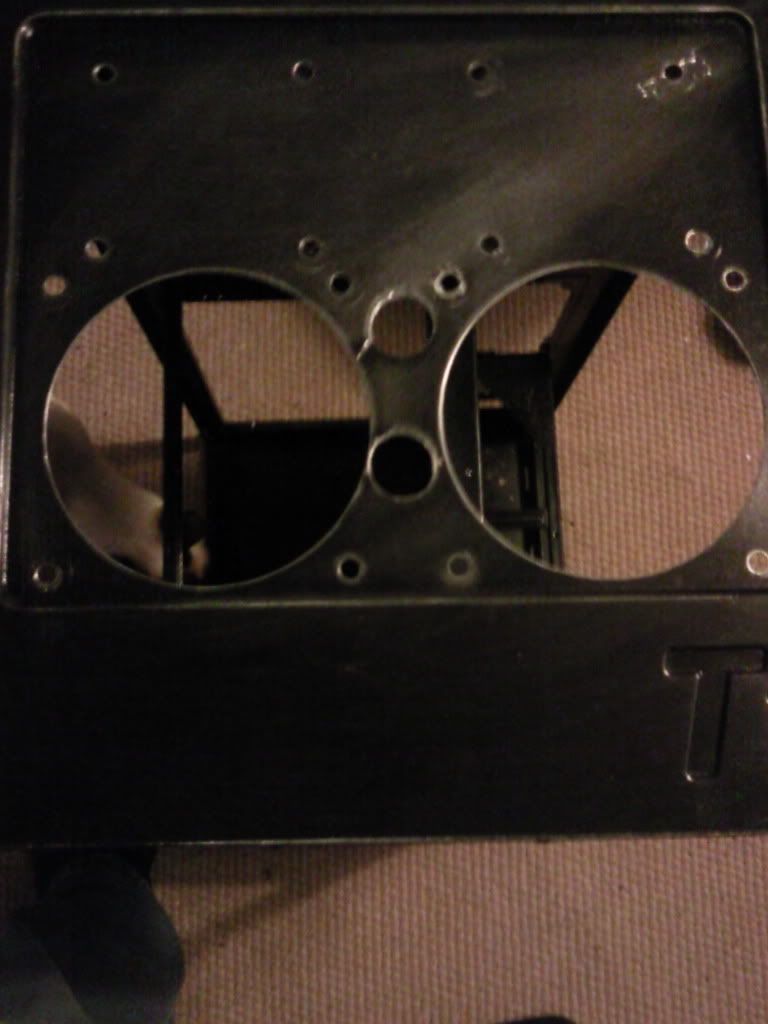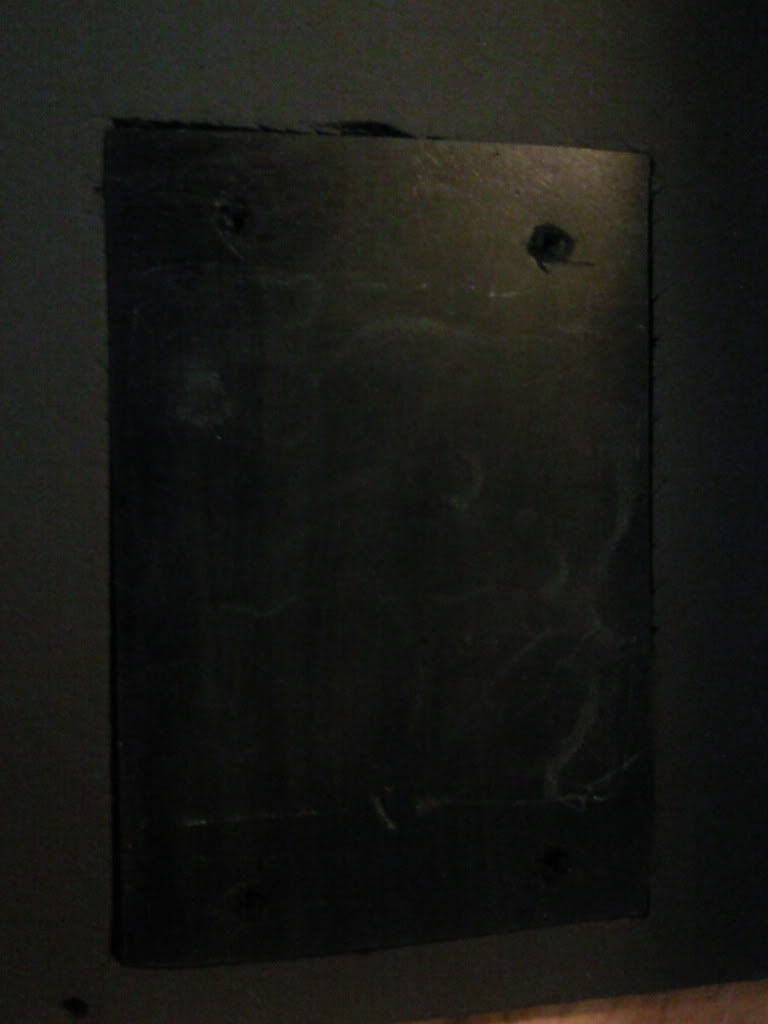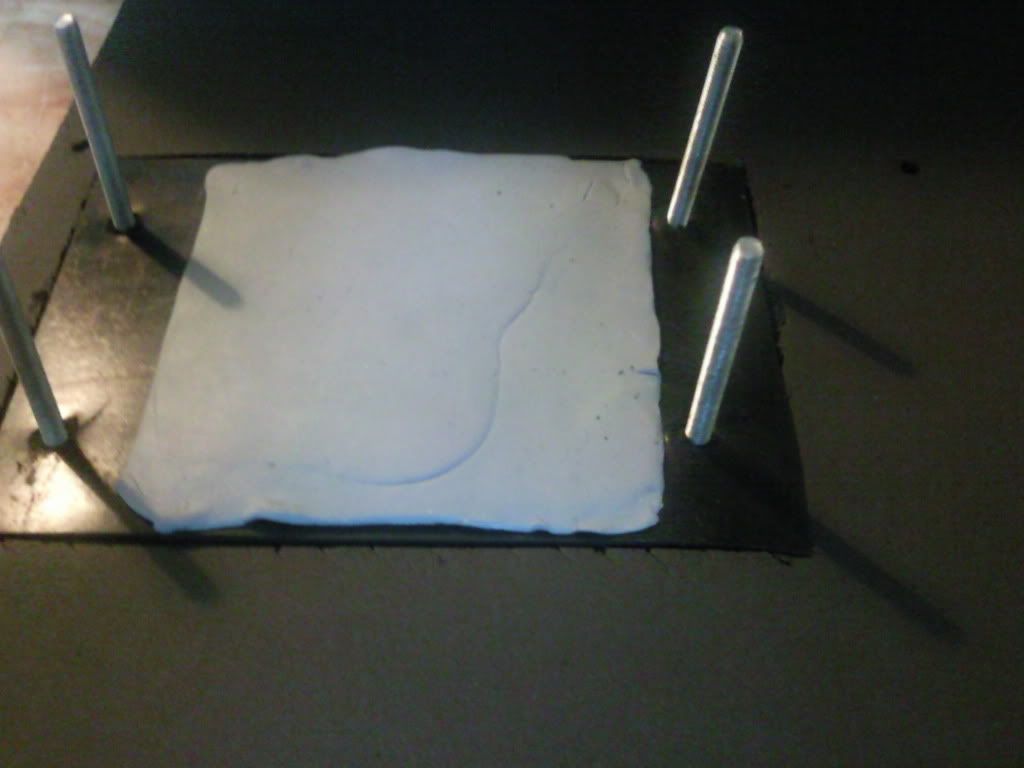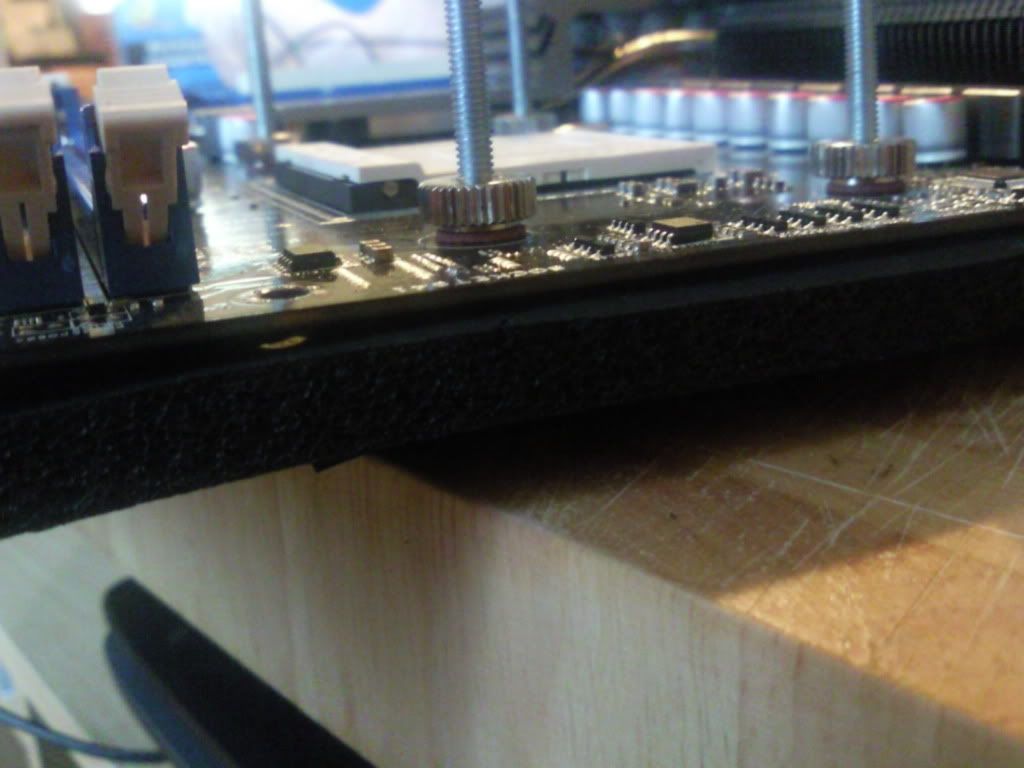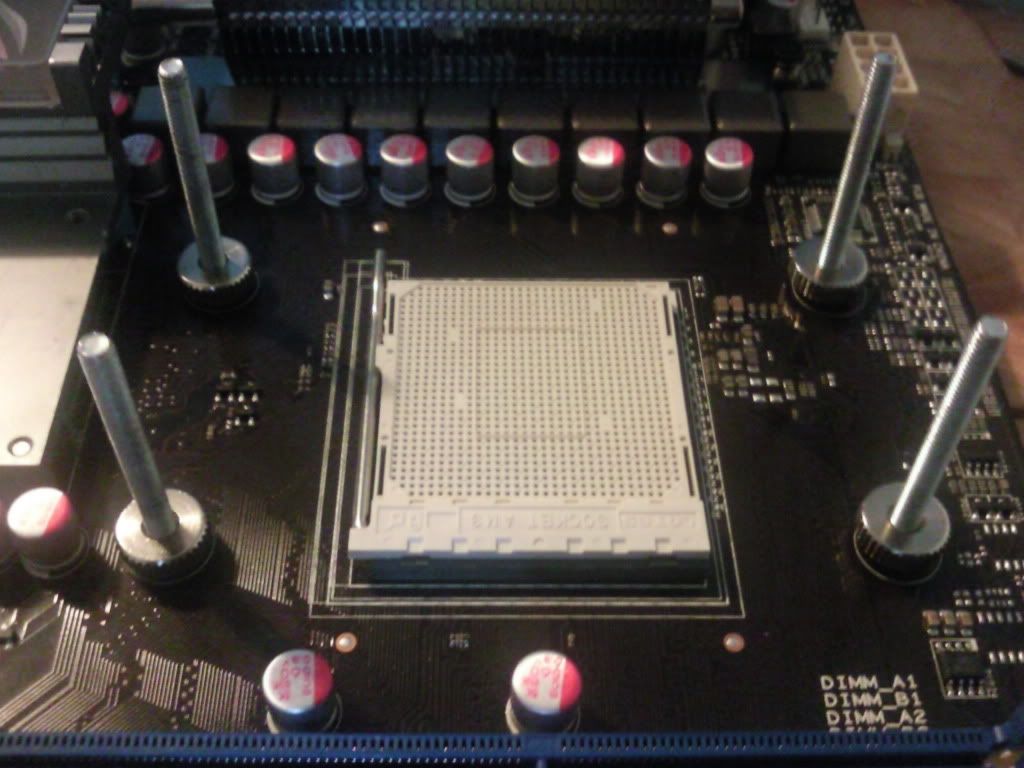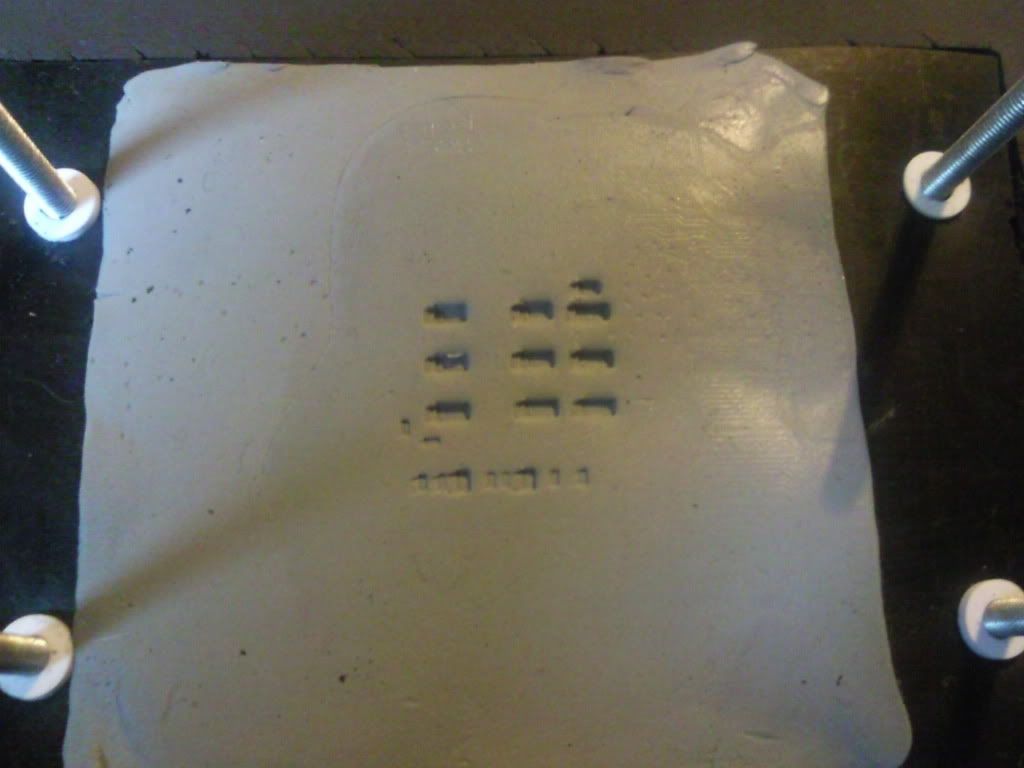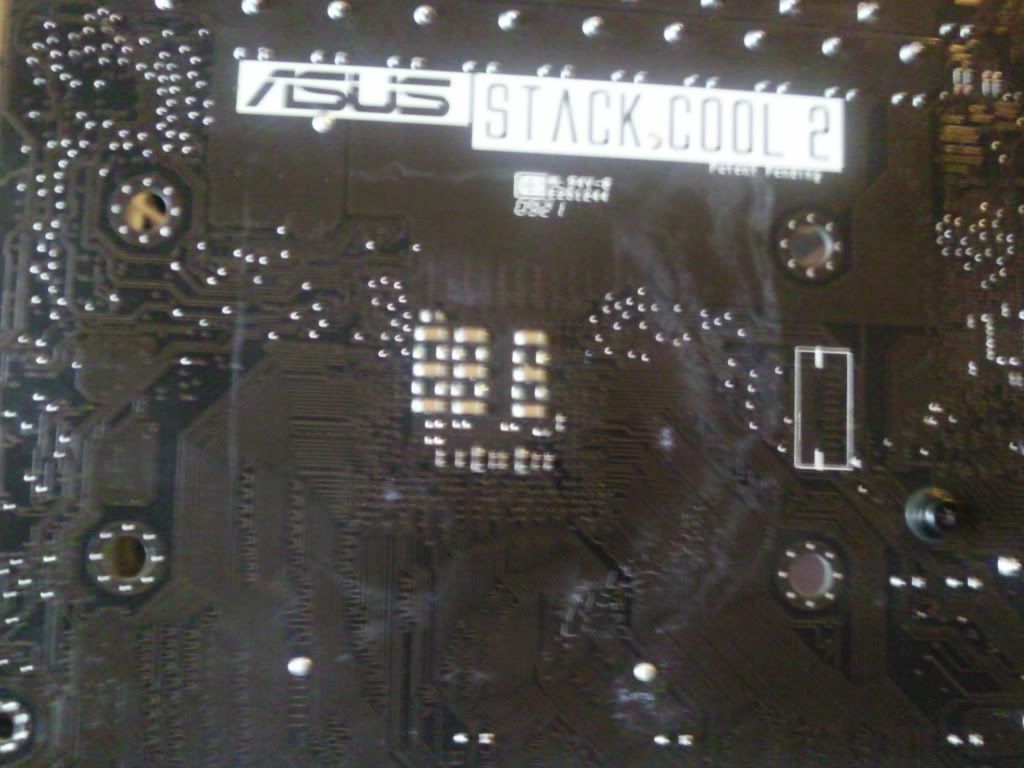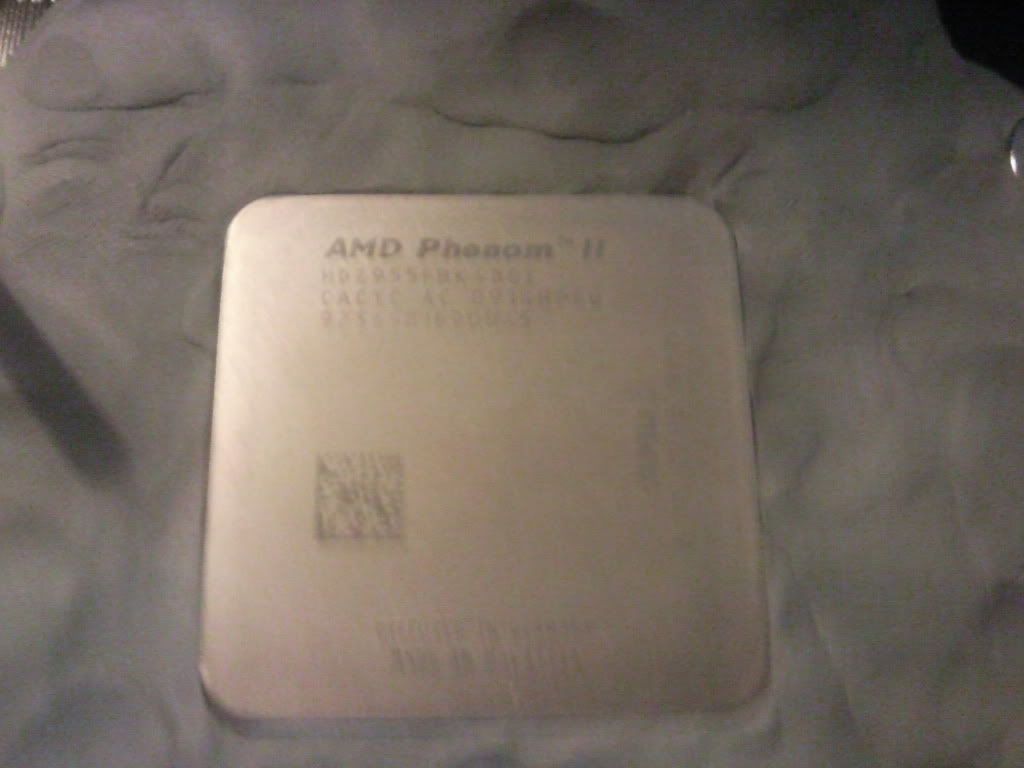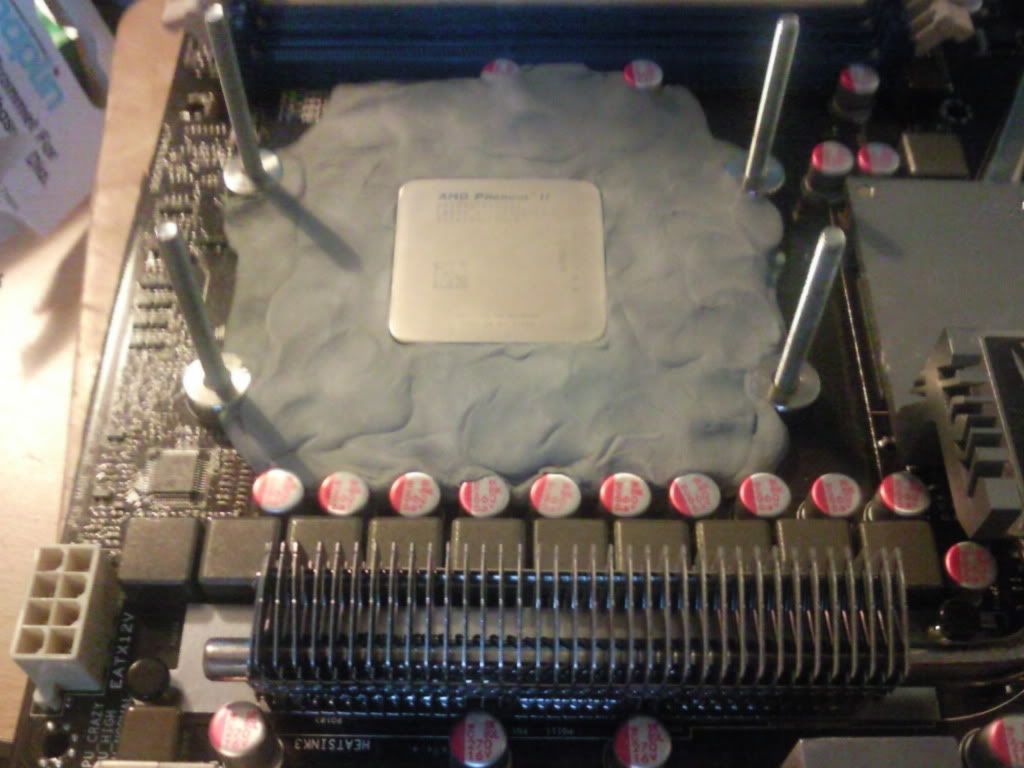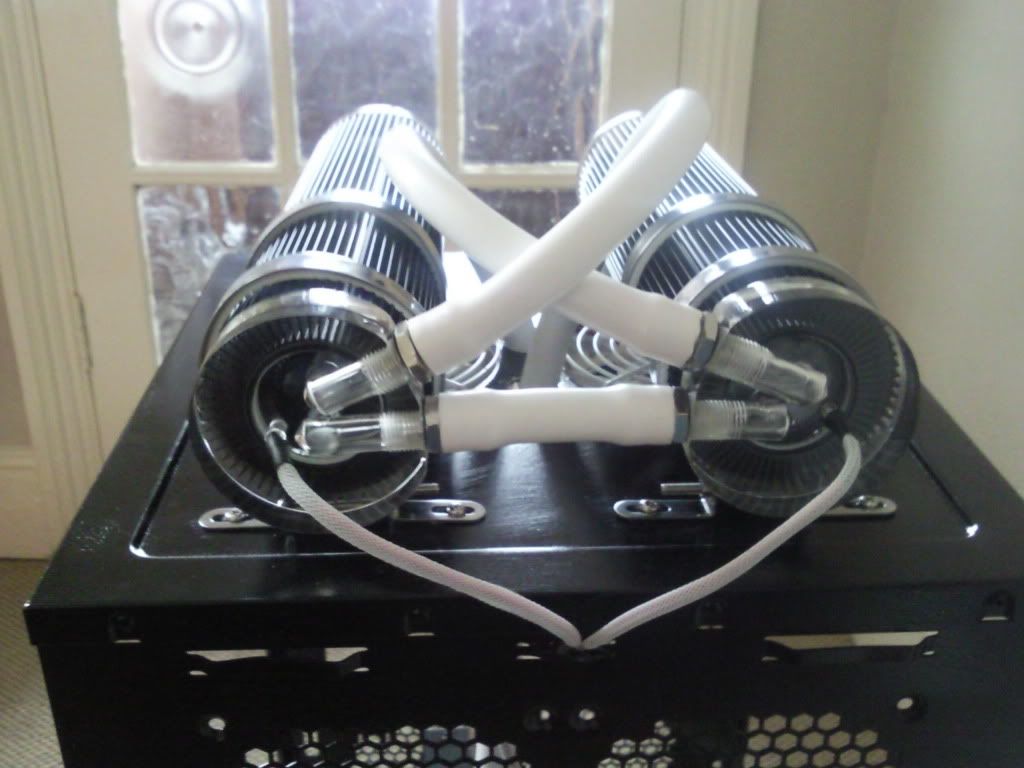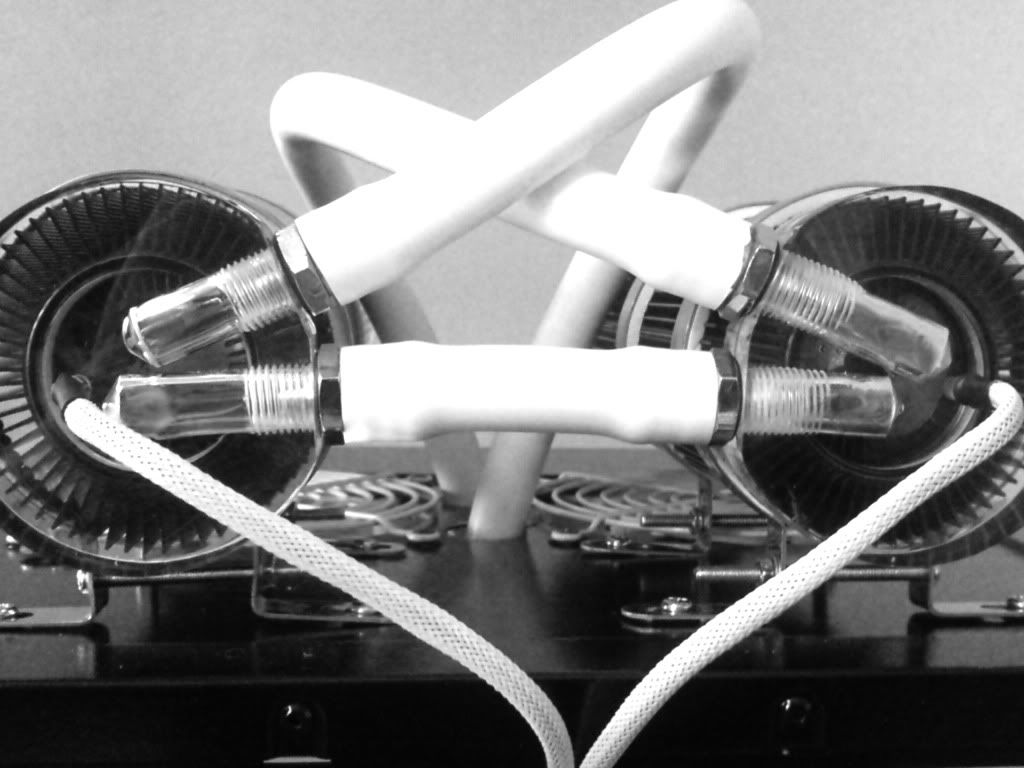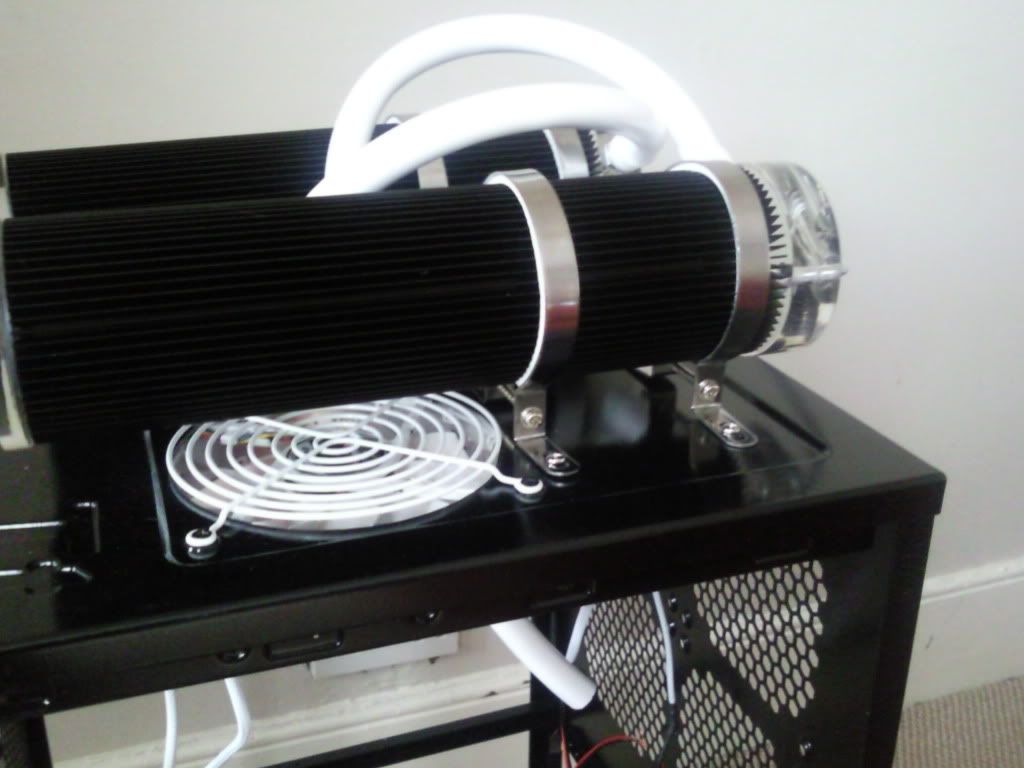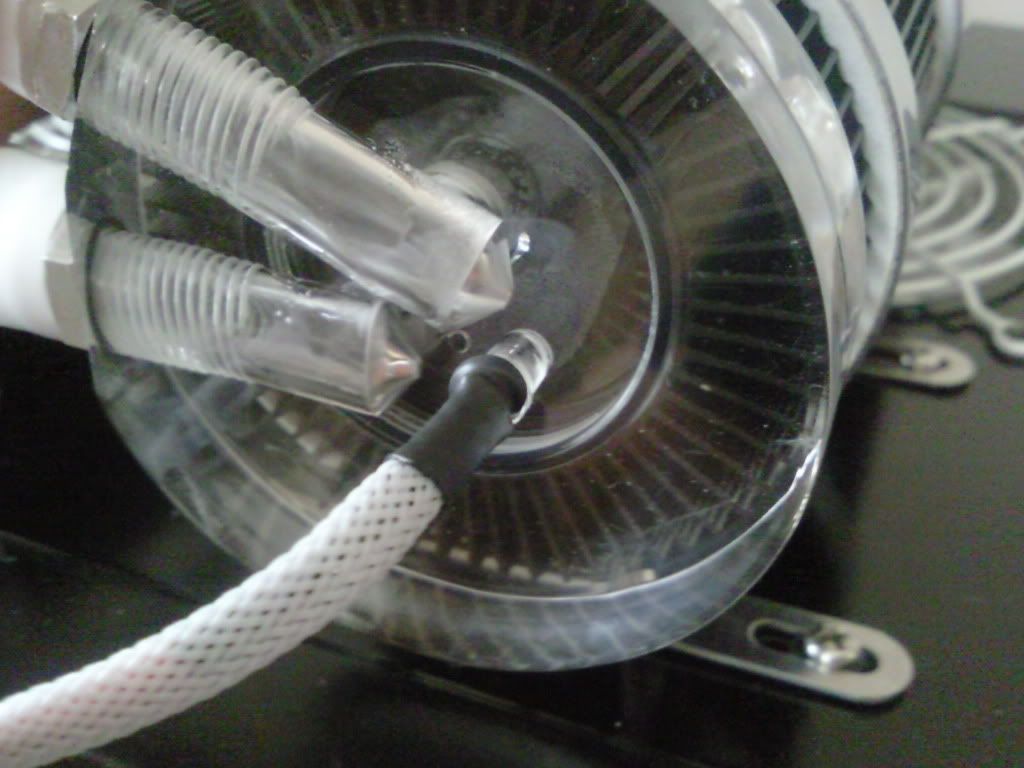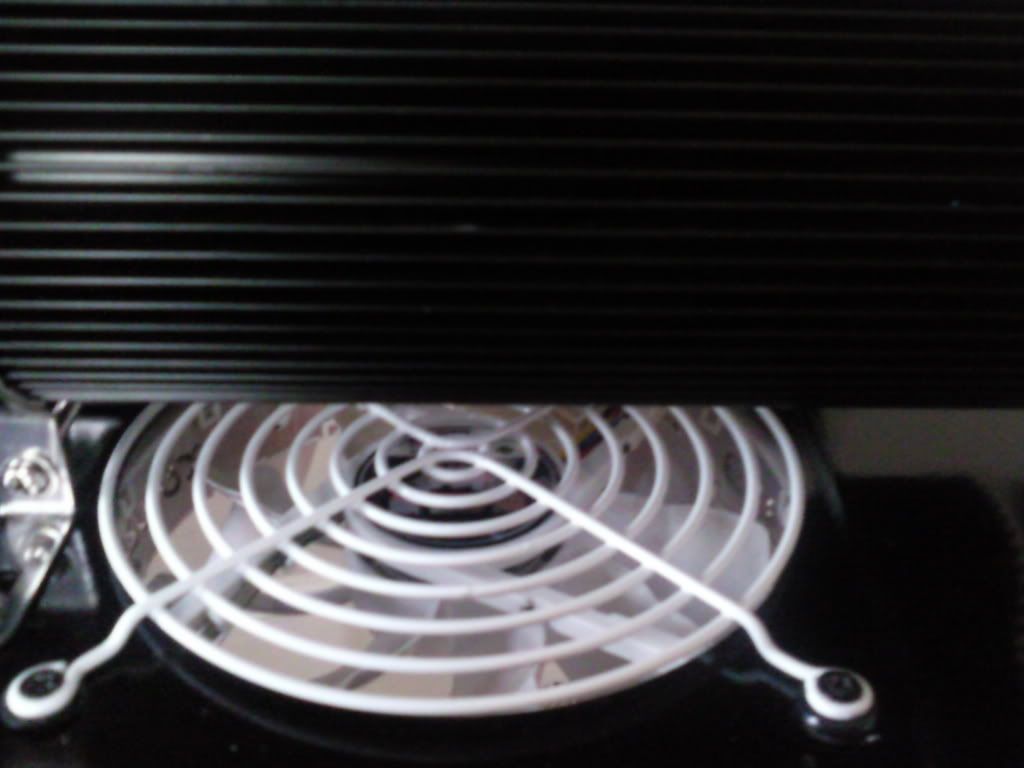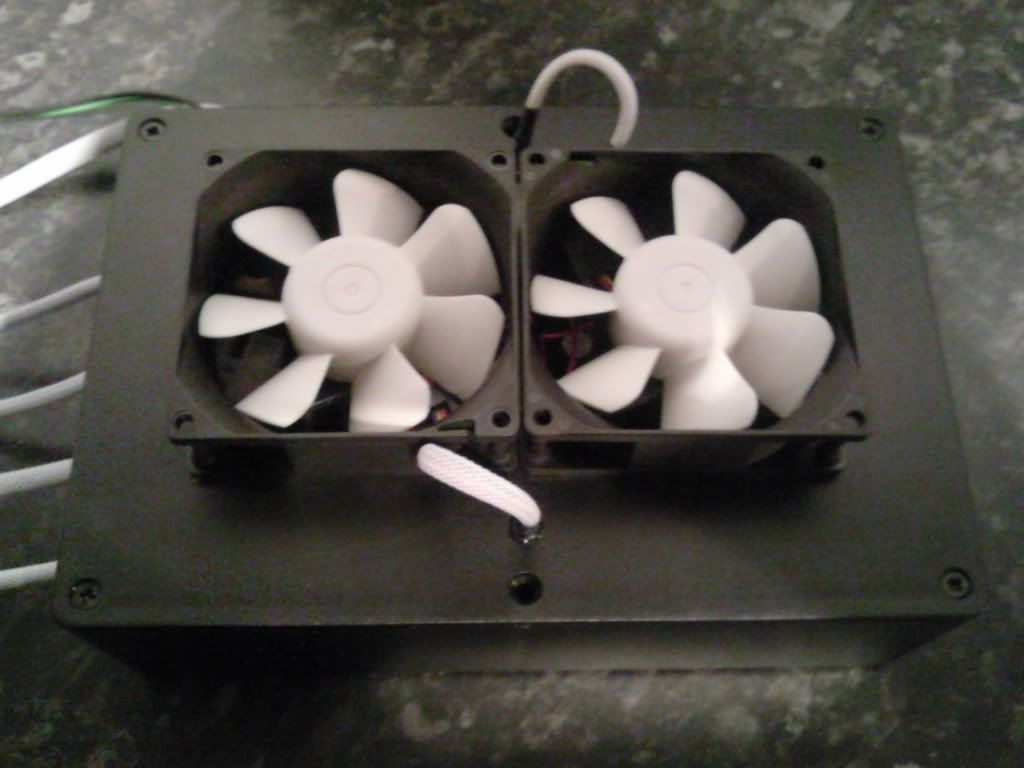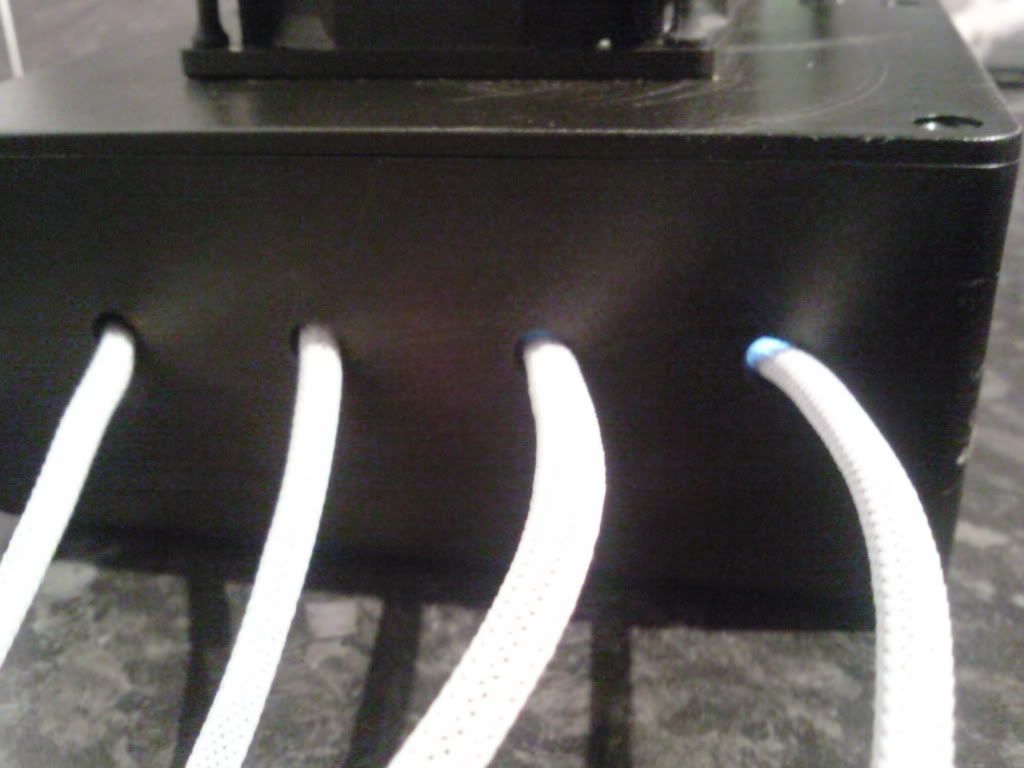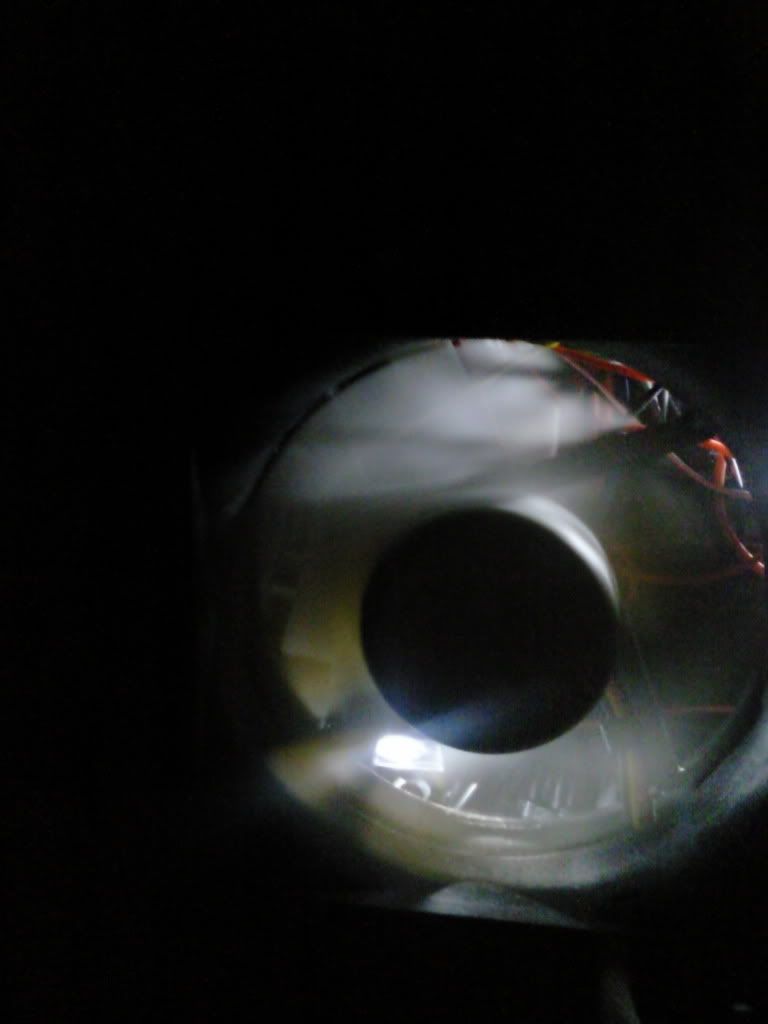Update 8:
Parts have started to arrive YAY!
So I didn't have time yesterday to take the photo's make a post but the postman knocked on the door at 7.30am Saturday! to drop a few things off!
Water Cooling:
2 x XSPC Laing DDC Tops - these are going on the two pumps that are going to be in the hot loop on the heat exchanger..
4 x Thermochill PA120.2 Shrouds - to go on the four 120.2 Radiators that are going to cool the hot loop
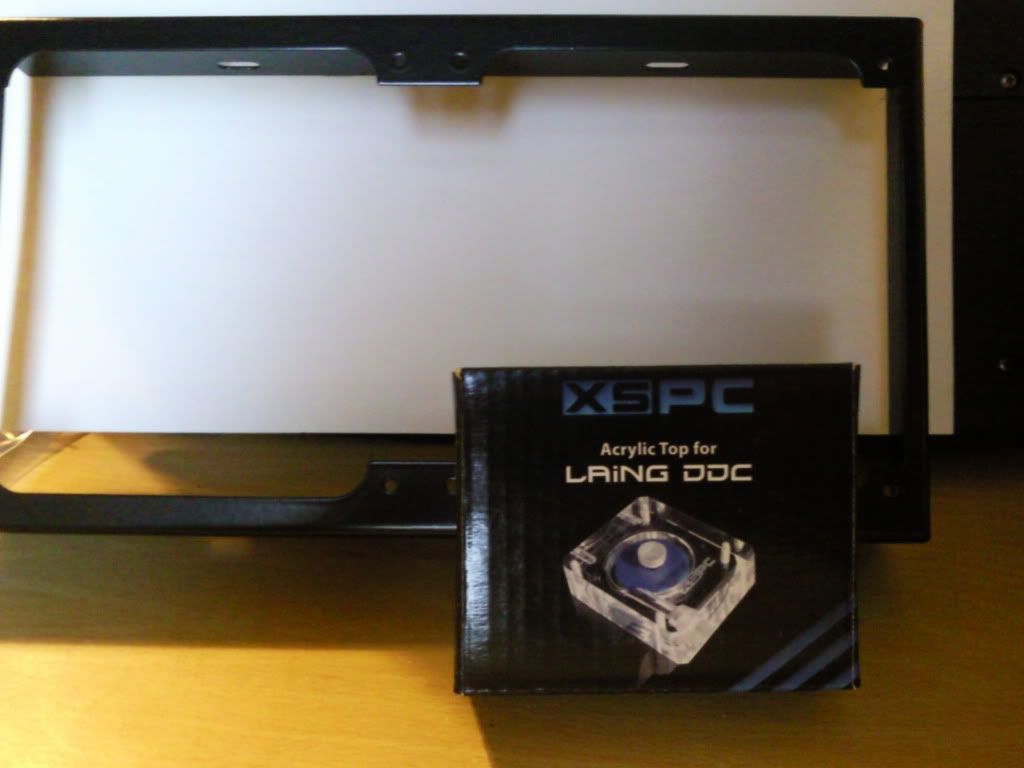
Heat Exchanger:
8 x TEC Units!
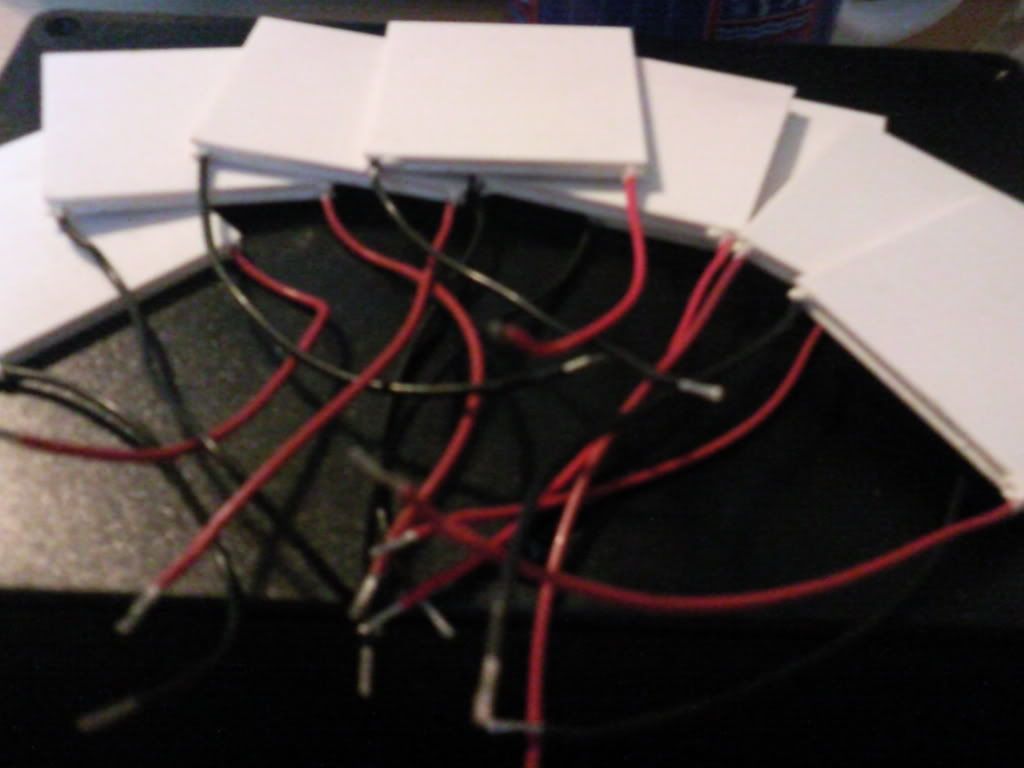
Water Cooling Configuration:
The case is pretty big but I started to plan out the liquid loops in more detail last week with some cardboard mock-ups in the case and realised I may not have as much room as I thought!
The current plan therefore is for the following water loops:
Loop 1 - Heat Exchanger Hot Side:
Components:
4 x Thermochill PA120.2 radiators with shrouds
2 x 250ml passive cooling reservoirs mounted on the case roof (will have two 120mm blow hole fans underneath to give some extra cooling).
2 x Laing DDC-1T Ultra with XSPC pump tops
1 x Fill Port
1 x Heat Exchanger Unit
Loop 2 - Heat Exchanger Cold Side:
Components:
1 x Heat Exchanger Unit
1 x Laing D5 Vario (probably with an EK top if I can get one)
1 x CPU Water Block
1 x Fill Port
Loop 3 - Graphics Cards
Components:
2 x XSPC 4870x2 Graphics Blocks
1 x Laing DDC-1T Ultra with XSPC reservoir top
1 x Thermochill PA120.3 radiator
Loop 4 - Motherboard & RAM
Components:
2 x RAM Cooler
1 x EK Asus Crosshair Formula III Full Board Block
1 x Thermochill PA120.1 radiator
1 x Laing DDC-1T Ultra with XSPC reservoir top
TEC Power Supply Unit Update:
I continued with the destruction of my Corsair 850w PSU, I have decided to mount it in a new housing as I can save room and keep a lot of the wiring inside the new housing rather than have it looking messy in the case.
So after cutting the old wires down to size and insulating and heat-shrinking off wires I won't be using I got the unit mounted into the new housing.
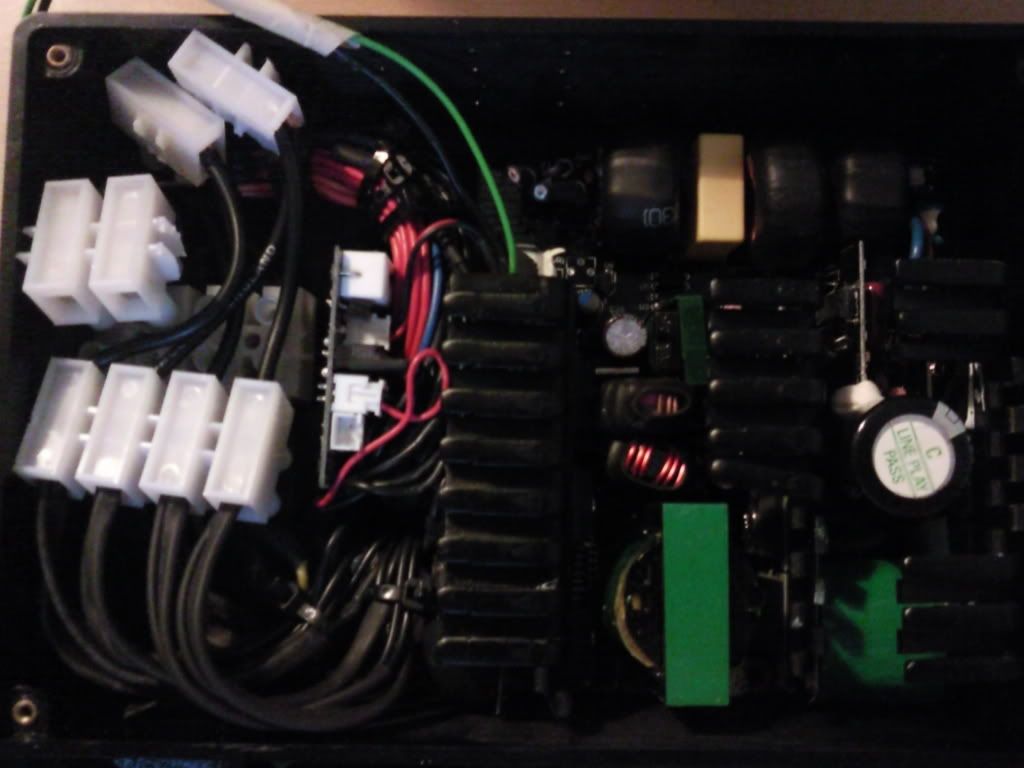
Following that the +12v and Ground wiring has been sorted, I will only have two +12v wires and two Ground wires leaving the unit. The wiring that will be running to the PWM controllers is rated at 45AMP's @ 12v and therefore should be more than capable of carrying the current. Each of these wires is running of 8 contact points on the PSU (so 16 contact points for +12v and 16 for ground), this should spread the load of the TEC units nicely and avoid any unfortunate mishaps.
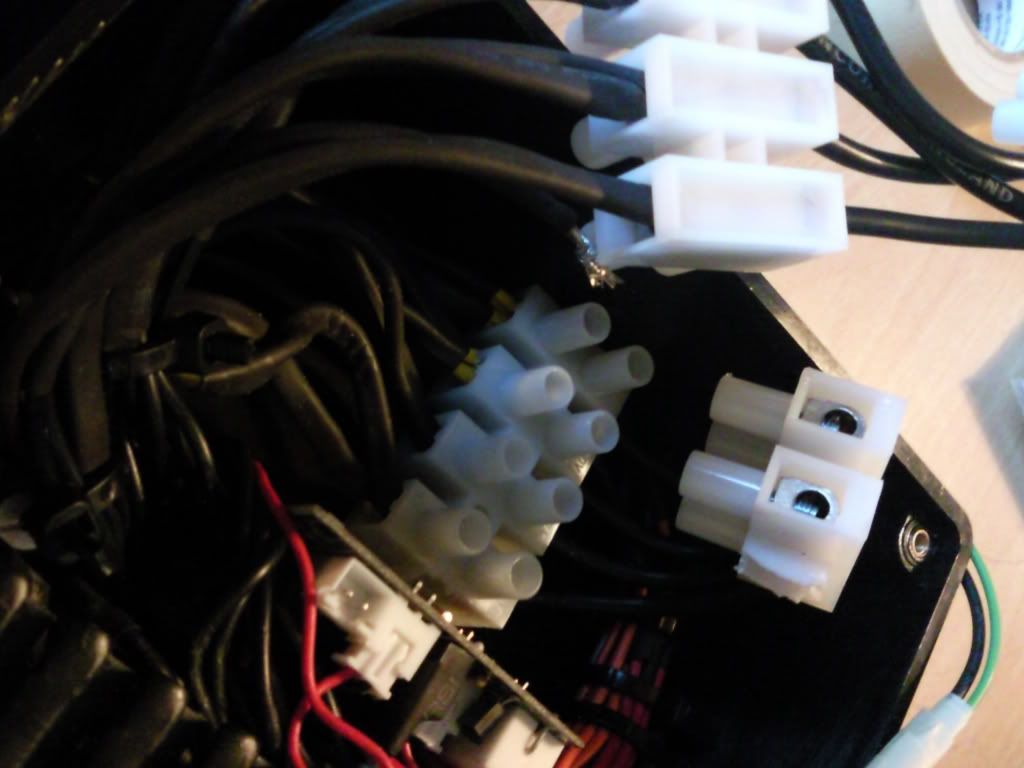
The only remaining jobs for the PSU housing are to drill out a 120mm fan hole (waiting for a hole saw) and to drive and grommet the holes for the +12v / Ground / On+Off / 120mm Fan wires & Mains Power wires to leave the unit.
Parts have started to arrive YAY!
So I didn't have time yesterday to take the photo's make a post but the postman knocked on the door at 7.30am Saturday! to drop a few things off!
Water Cooling:
2 x XSPC Laing DDC Tops - these are going on the two pumps that are going to be in the hot loop on the heat exchanger..
4 x Thermochill PA120.2 Shrouds - to go on the four 120.2 Radiators that are going to cool the hot loop

Heat Exchanger:
8 x TEC Units!


Water Cooling Configuration:
The case is pretty big but I started to plan out the liquid loops in more detail last week with some cardboard mock-ups in the case and realised I may not have as much room as I thought!

The current plan therefore is for the following water loops:
Loop 1 - Heat Exchanger Hot Side:
Components:
4 x Thermochill PA120.2 radiators with shrouds
2 x 250ml passive cooling reservoirs mounted on the case roof (will have two 120mm blow hole fans underneath to give some extra cooling).
2 x Laing DDC-1T Ultra with XSPC pump tops
1 x Fill Port
1 x Heat Exchanger Unit
Loop 2 - Heat Exchanger Cold Side:
Components:
1 x Heat Exchanger Unit
1 x Laing D5 Vario (probably with an EK top if I can get one)
1 x CPU Water Block
1 x Fill Port
Loop 3 - Graphics Cards
Components:
2 x XSPC 4870x2 Graphics Blocks
1 x Laing DDC-1T Ultra with XSPC reservoir top
1 x Thermochill PA120.3 radiator
Loop 4 - Motherboard & RAM
Components:
2 x RAM Cooler
1 x EK Asus Crosshair Formula III Full Board Block
1 x Thermochill PA120.1 radiator
1 x Laing DDC-1T Ultra with XSPC reservoir top
TEC Power Supply Unit Update:
I continued with the destruction of my Corsair 850w PSU, I have decided to mount it in a new housing as I can save room and keep a lot of the wiring inside the new housing rather than have it looking messy in the case.
So after cutting the old wires down to size and insulating and heat-shrinking off wires I won't be using I got the unit mounted into the new housing.

Following that the +12v and Ground wiring has been sorted, I will only have two +12v wires and two Ground wires leaving the unit. The wiring that will be running to the PWM controllers is rated at 45AMP's @ 12v and therefore should be more than capable of carrying the current. Each of these wires is running of 8 contact points on the PSU (so 16 contact points for +12v and 16 for ground), this should spread the load of the TEC units nicely and avoid any unfortunate mishaps.

The only remaining jobs for the PSU housing are to drill out a 120mm fan hole (waiting for a hole saw) and to drive and grommet the holes for the +12v / Ground / On+Off / 120mm Fan wires & Mains Power wires to leave the unit.
Last edited:


